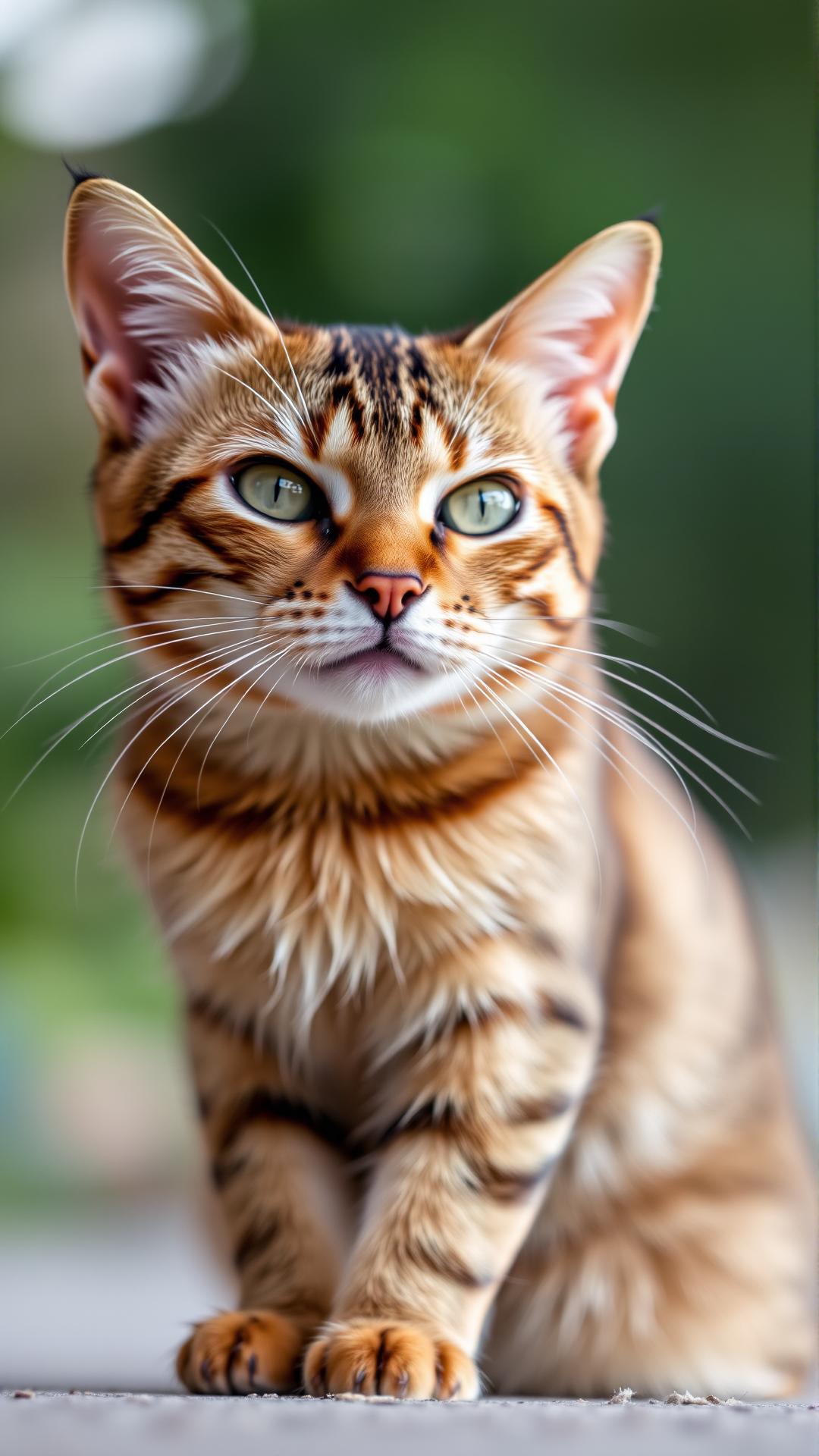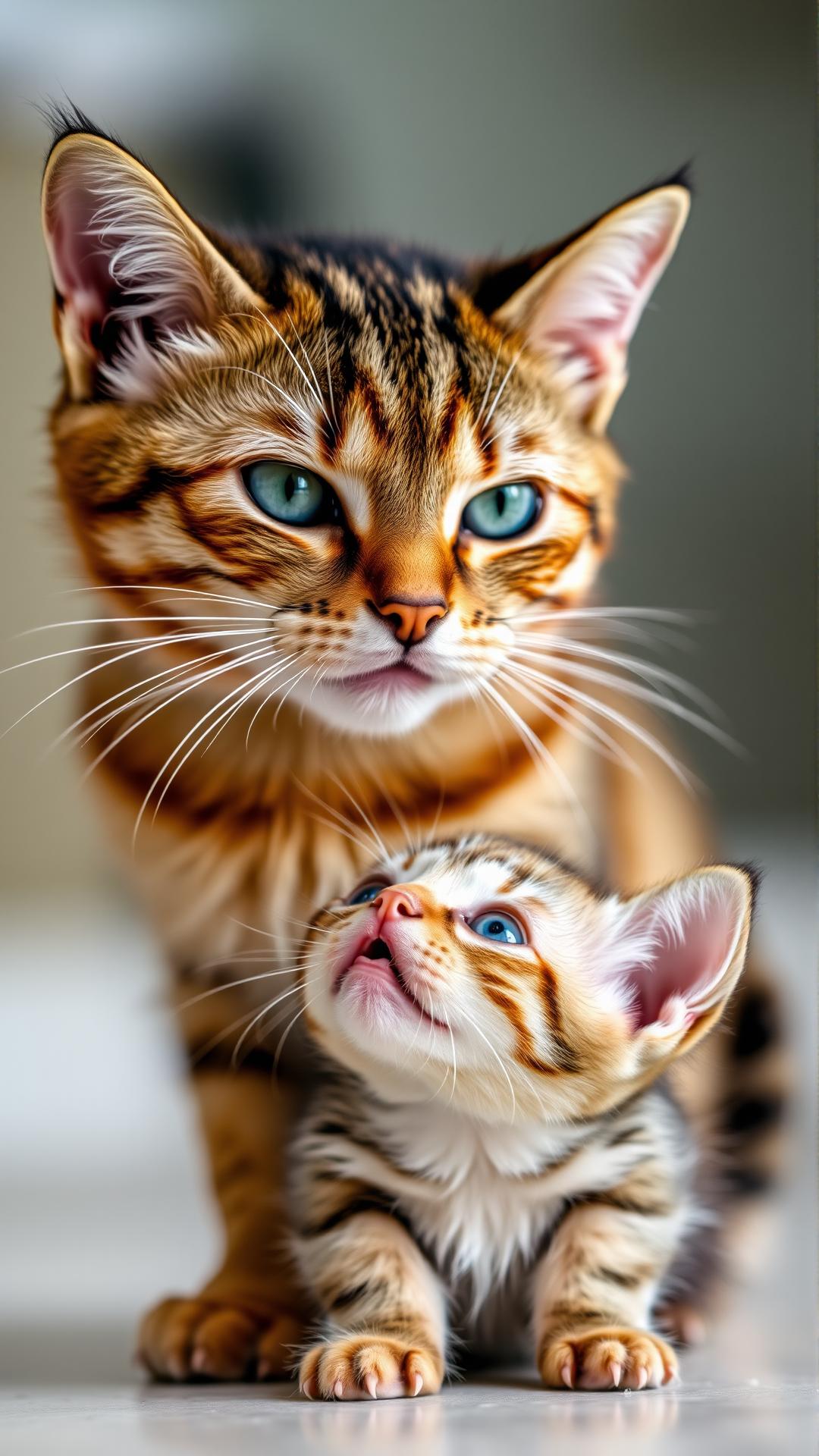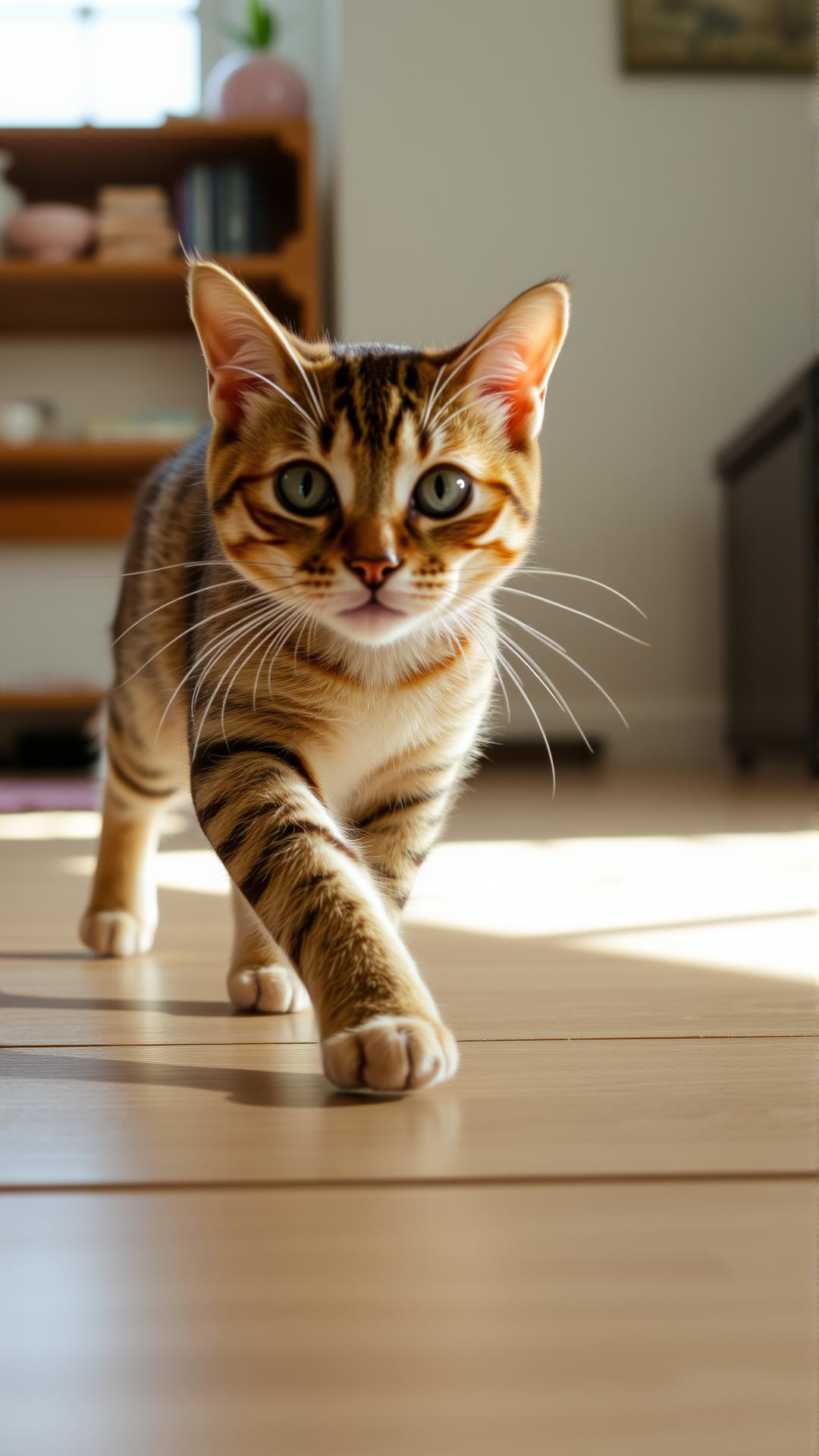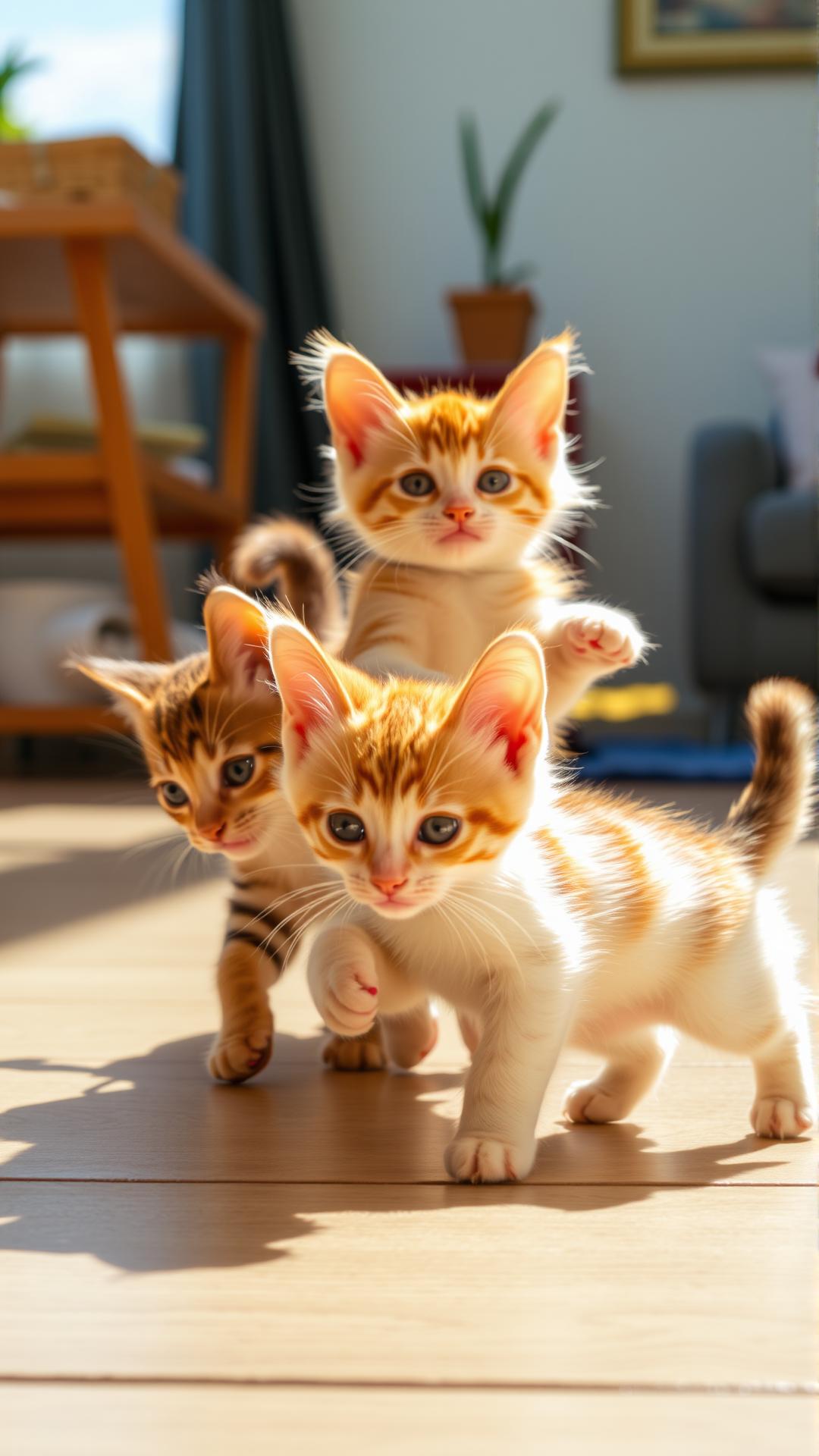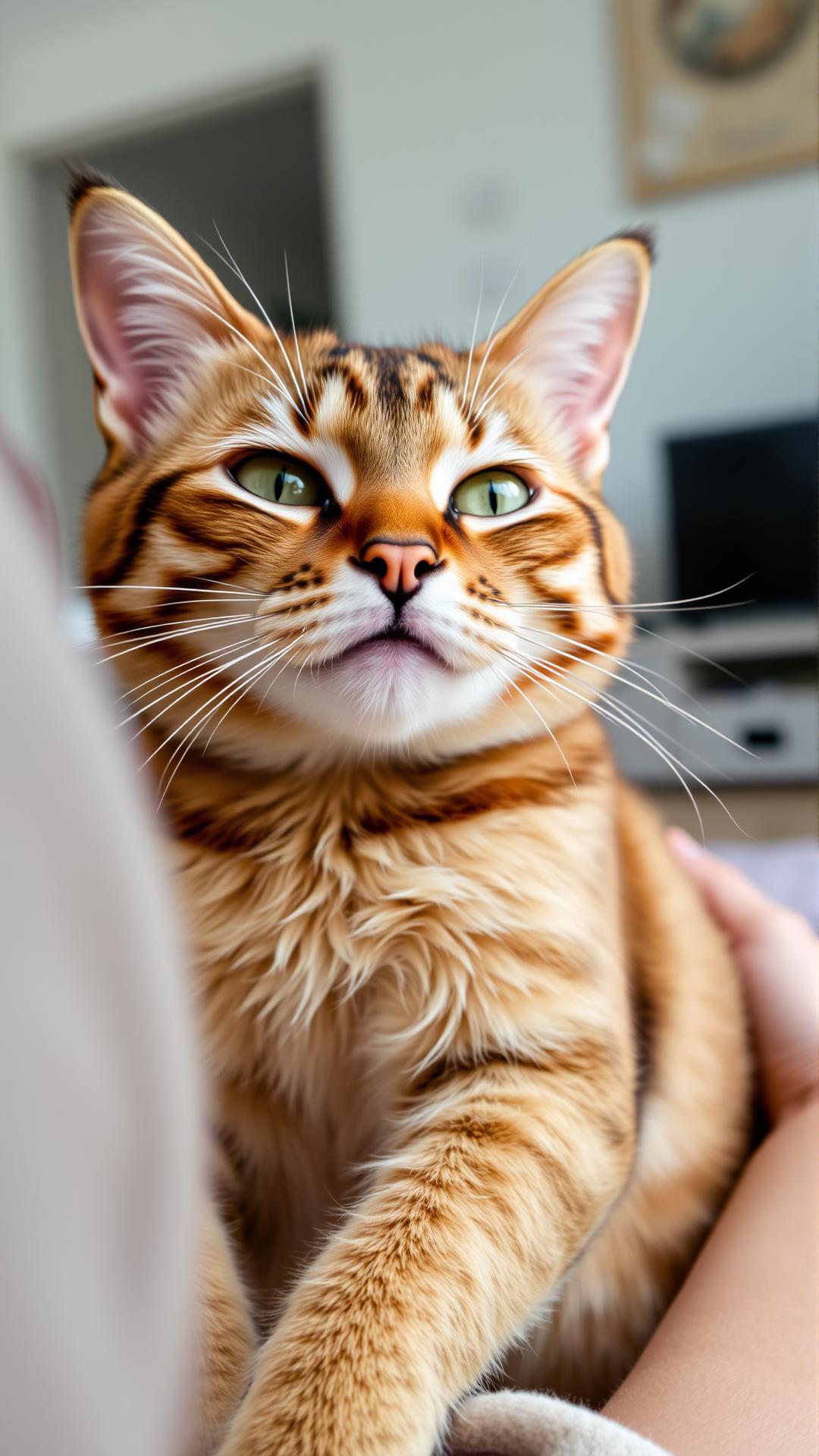Introduction
The world of cat and kitten behavior is rich and fascinating, revealing deep insights into how these charming animals interact with their environment. As cats have been treasured companions for thousands of years, understanding their behavior becomes crucial for fostering positive and harmonious relationships with them. This article delves into the nuances of feline communication, from vocalizations to body language, allowing cat owners to better interpret their pets’ actions and needs.
With the rising popularity of cats as household pets, there is a growing need to comprehend their unique behaviors. This exploration will cover a range of topics, including the social structures among feline communities, the development of behaviors from kittenhood to adulthood, and practical advice on improving cat-human communication. Together, we will uncover the secrets behind the playful antics of kittens and the sophisticated behaviors of adult cats.
Understanding the Basics of Cat Behavior: Explore Key Traits and Instincts of Felines
Key Traits of Felines
Cats and kittens exhibit a range of behaviors that reveal their complex nature. They possess distinct personality traits that vary widely from one individual to another, yet certain commonalities define their species. For instance, felines are known for their independence and territorial instincts. Unlike dogs, which often seek constant companionship, cats are more solitary by nature. This behavior is rooted in their ancestry; wild ancestors hunted alone, leading to the development of self-reliance.
Another prominent feature of feline behavior is their curiosity. Cats are naturally inquisitive creatures, often exploring their surroundings and investigating new stimuli. This tendency not only engages their intelligence but also helps them adapt to various environments. Their exploratory nature can sometimes lead to mischief, making it vital for pet owners to create a safe space free from hazards.
Instinctual Tendencies
Felines possess a unique set of instincts that influence their behavior. One dominant instinct is hunting, which remains intrinsic regardless of whether the cat is domesticated or feral. Kittens begin to exhibit hunting behaviors through play at an early age, pouncing and stalking toys as they develop their skills. Even indoor cats retain this instinct, often showing interest in moving objects or small creatures like insects. For owners, this behavior can be a delightful display, providing insight into their pet’s natural inclinations.
Grooming is another instinctual behavior seen in both cats and kittens. Cats frequently groom themselves to maintain hygiene, regulate body temperature, and even as a social bonding process when grooming others. Observing your cat or kitten’s grooming habits can indicate their emotional state; excessive grooming may signify stress or anxiety, while relaxed grooming often reflects contentment.
Understanding these fundamental aspects of cat behavior is essential for fostering a strong bond between humans and their feline companions. Not only does it enhance communication, but it also allows pet owners to create an enriching environment that aligns with their cats’ natural instincts. By recognizing these key traits and tendencies, individuals can enjoy a more harmonious relationship with their beloved pets.
Vocal Communications of Cats and Kittens: Understanding Feline Vocalizations for Enhanced Pet Communication
Understanding how cats and kittens communicate vocally is essential for strengthening the bond we share with our feline companions. While we may primarily rely on verbal communication, cats utilize an array of sounds to express their needs, emotions, and intentions. Each vocalization serves a different purpose and can be interpreted in the context of their immediate environment and interactions.
The Sounds of Communication: Key Vocalizations
Cats are known for their diverse vocal repertoire, which can include meows, purrs, hisses, and growls. Each sound carries distinct meanings:
- Meowing: Primarily used to communicate with humans, meows can vary in pitch, length, and intensity. A high-pitched meow may indicate excitement or a demand for attention, while a low, drawn-out meow could suggest displeasure or frustration.
- Purring: Often associated with contentment, purring can also indicate distress in certain situations. Kittens will purr to communicate well-being to their mothers, while adult cats may use this sound to soothe themselves during times of stress.
- Hissing and Growling: These vocalizations are often employed as defensive tools. Hissing is a warning sign, signaling that a cat feels threatened, while growling is more aggressive and may mean the cat is ready to defend itself if necessary.
Understanding The Context
To interpret a cat’s vocalizations accurately, it is crucial to consider the context in which they occur. A cat may meow more frequently when it is hungry or wants to play, and their tone may change based on their mood. For instance, a playful cat might trill or chirp, inviting interaction, while a distressed cat may vocalize more harshly.
Kittens, with their developing vocal skills, often experiment with sounds as they interact with their littermates and mother. Observing how these sounds change and evolve can provide insights into their growth and socialization. It becomes imperative for pet owners to respond to these vocal cues appropriately, ensuring their cats feel understood and secure.
Being attuned to the specific vocalizations of cats and kittens not only enhances our understanding of their needs but also enriches our communication, leading to a deeper bond. As we prepare to explore how body language plays a vital role in their overall communication, remembering the vocal nuances will be a crucial foundation for interpreting their silent signals in the next chapter.
Body Language: A Cat’s Non-Verbal Communication
Understanding Feline Movements and Posture
While vocalizations provide insight into a cat’s mood and intentions, a cat’s body language is equally significant, serving as a primary mode of non-verbal communication. The subtleties of a cat’s movements and posture convey a wide range of emotions, from comfort and affection to fear and aggression. Observing these cues allows pet parents to better understand their feline friends, enhancing the bond between them.
Cats communicate their feelings through various physical signals, and understanding these can help in interpreting their emotions. For instance, a cat raising its tail high, particularly with a slight curve at the tip, signifies that it is feeling friendly and confident. This stance is often accompanied by an approach towards you, indicating curiosity and willingness to engage. In contrast, a lowered tail often reveals insecurity or submission, signaling that the cat may not be comfortable in the current situation.
The position of a cat’s ears is another crucial indicator of its mood. Ears that are pointed forward signify interest or excitement. If the ears are flattened against the head, however, this can indicate irritation or fear. A cat that suddenly swivels its ears in different directions is likely assessing its environment, preparing to react to potential threats or opportunities.
Eye contact also plays a vital role in feline communication. Slow blinking, sometimes referred to as a “cat kiss,” indicates trust and affection. When a cat stares directly with wide-open eyes, it might feel challenged or threatened. Therefore, how you respond to a cat’s gaze can influence its comfort level—blinking slowly back can convey reassurance.
A cat’s posture when resting can tell a lot about its emotional state. A cat that is curled up tightly is likely seeking warmth and safety, whereas one that sprawls out in an open area demonstrates relaxation and comfort in its environment. Understanding these signals can prepare you for any shifts in behavior, helping to mitigate stress or anxiety in your pet.
Importance of Non-Verbal Cues in Feline Interactions
Being attuned to these non-verbal cues enhances our ability to communicate effectively with our cats. By recognizing the signs of stress, contentment, or discomfort, we can tailor our interactions to foster a supportive environment. Increased awareness of body language not only helps in understanding individual cats but also enriches the feline-human relationship, leading to a more harmonious living arrangement where both parties feel understood and valued.
The Role of Social Structures Among Cats
Understanding Group Dynamics in Feline Society
Cats are often seen as solitary creatures, yet in reality, they exhibit complex social behaviors, particularly when living in groups. Within these groups, often called colonies, cats establish hierarchies and social structures that significantly influence their interactions. These dynamics can be observed in both feral and domestic cats, shedding light on their relationships and behaviors.
The foundation of social structure among cats often begins with matrilineal bonds. Female cats, especially mothers and daughters, form strong affiliations and stick together, offering support in raising kittens. This support system fosters a safe environment for young cats to develop essential social skills. Male cats, on the other hand, may have more fluid relationships with different females and often leave their maternal group as they reach maturity, seeking their own territory and opportunities.
Within a colony, interactions can frequently be categorized into various social roles, where some cats take on dominant roles while others may be submissive. Dominant cats express their status through assertive postures, vocalizations, and even resource guarding, overseeing access to food and shelter. Conversely, subordinate cats may avoid confrontations by exhibiting timid behaviors or soliciting grooming from higher-ranking individuals. This behavior not only strengthens bonds but also aids in conflict resolution.
Social hierarchies are not static; they can shift with changes in the environment or the introduction of new cats. Tension may arise during these transitions, leading to conflicts that are often resolved through ritualistic displays rather than overt aggression. Understanding these dynamics allows pet owners to navigate their cats’ interactions more effectively. For instance, if a new cat is introduced to the household, observing the established cats’ responses provides insight into their social structure and helps in ensuring a smoother integration process.
The Significance of Communication in Feline Relationships
Communication plays a pivotal role in maintaining and defining these social structures. While body language previously covered provides much insight, vocalizations also serve specific functions within a group. Cats may chirp or trill to communicate among their colony members, convey excitement, or even express a call for attention. Sound signals, combined with body posture, enhance understanding of a cat’s state and their position within the hierarchy.
Recognizing these social dynamics and communication methods can significantly enhance the relationship between cats and their humans. By observing how cats interact and establish roles within their group, pet owners can foster a harmonious environment that respects their natural social instincts, ultimately strengthening the bond with their feline companions.
Play Behavior: An Essential Aspect of Kitten Development
The Importance of Play in Kittens
Play behavior is an integral part of a kitten’s development, significantly influencing their physical and social skills. Engaging in play is not merely a pastime for kittens; it serves as a crucial mechanism that allows them to explore their environment, practice essential survival skills, and develop social interactions with their littermates and humans alike.
Through play, kittens learn vital hunting skills. Their natural instincts provoke them to stalk, pounce, and capture objects that mimic the movements of prey. Whether it’s chasing a string, pouncing on a feather toy, or engaging in a game of hide-and-seek, these activities help strengthen their muscles, improve their coordination, and enhance their agility. Much like human children role-playing as adults, kittens utilize playtime as a simulation of real-life situations that are essential for their survival.
Social Development Through Play
Playful interactions between kittens also provide valuable opportunities for socialization. Kittens learn to communicate with their peers through playful behaviors. For instance, gentle wrestling, batting at each other, and engaging in mock fights help them understand boundaries, learn the subtleties of body language, and practice acceptable behavior. Such interactions foster a sense of teamwork and cooperation, essential qualities as they transition into adulthood.
These play sessions teach kittens how to express themselves confidently and receive feedback from their peers, aiding their emotional development. Kittens that engage in play with their guardians also strengthen their bond with humans, enhancing trust and reducing anxiety when approached.
The lack of play can lead to behavioral issues in kittens. Without sufficient opportunities to engage in play, they may develop excessive energy or anxiety, leading them to express their frustrations through destructive behaviors. Thus, it’s vital for pet owners to encourage and participate in interactive play with their kittens to satisfy their physical and emotional needs.
The benefits of play extend beyond the kittens themselves; they also enrich human-feline relationships. Understanding and participating in a kitten’s playtime allows guardians to observe their unique personalities and behaviors, deepening the bond and enhancing communication with their feline companions.
Communication Between Cats and Humans: Examine the Unique Ways Cats Communicate with Their Human Companions
Understanding Feline Language
The fascinating communication patterns between cats and their human companions have evolved significantly over the years. Unlike dogs, whose communication relies heavily on vocalizations and body language, cats are more nuanced in their attempts to convey their needs and emotions. They utilize a combination of vocal sounds, body language, and even facial expressions to interact with people, establishing a unique language in their bond with humans.
Vocalizations play a key role in this communication. Cats can produce a variety of sounds—from the familiar meows and purrs to trills and chirps. Interestingly, many of these sounds are tailored specifically for human interaction rather than for communicating with other cats. A study suggests that a cat’s meow may vary depending on its intent; a pleading meow might be longer and more plaintive, whereas a contented purr indicates relaxation. This adaptation highlights their understanding of human emotions and their ability to modify their behavior accordingly.
Body language is another critical aspect of feline communication. A cat’s tail position, for instance, can indicate a range of feelings. A high-held tail often signifies confidence and friendliness, while a low or tucked tail could indicate fear or submission. Similarly, cats use their ears and whiskers to express their moods. Ears flattened back may indicate irritation or anxiety, whereas whiskers pointing outward suggest curiosity. Recognizing these cues can greatly enhance human-feline interactions.
The Evolution of Human-Feline Relationships
The relationship between cats and humans has transitioned from one of mutual survival to a more profound emotional connection. In ancient times, cats were revered for their pest control skills, yet over time, they have become cherished companions. This shift has been accompanied by a change in how cats communicate with us. They learn to mimic certain behaviors that elicit a positive response from humans, further bridging the communication gap.
Understanding the unique ways in which cats communicate fosters a stronger bond between them and their owners. As we become more attuned to their needs and emotions, we not only improve our ability to interpret their behavior but also enhance the joy of having these whimsical creatures in our lives. Growing awareness of their language deepens our relationship, making interactions with our feline friends even more rewarding.
Addressing Behavioral Issues in Cats: Insights for Improved Communication
Common Behavioral Issues
Cats, with their unique personalities and instincts, can occasionally display behaviors that perplex their owners. Understanding these common behavioral issues is crucial in fostering a harmonious bond. Some prevalent concerns include litter box aversion, excessive aggression, and inappropriate scratching. Litter box avoidance can arise from stress, medical conditions, or an unclean litter box. Aggression may stem from playfulness or territorial instincts, while inappropriate scratching often indicates a need for stimulation or stress relief.
Strategies for Resolution
Addressing these behavioral issues requires patience and awareness. Here are some strategies to help mitigate the problems:
- Litter Box Issues: Ensure the litter box is clean, sufficiently large, and placed in a quiet, accessible location. Sometimes, changing the type of litter can make a significant difference. If the issue persists, consult a veterinarian to rule out any medical concerns.
- Managing Aggression: Observe the triggers behind aggressive behavior. Engage your cat in interactive play using toys that allow for safe distance, such as wand toys or laser pointers. This not only satisfies their hunting instinct but also provides an outlet for energy. If aggression occurs during petting, learn to recognize cues that precede the behavior and reduce interaction before it escalates.
- Preventing Inappropriate Scratching: Provide scratching posts and pads that offer appealing textures, placed in locations where your cat likes to scratch. Always reward your cat with praise or treats when they use the appropriate surfaces. For persistent cases, consider using deterrents on areas that are frequently scratched.
- Stress Management: Environmental changes can lead to stress-related behaviors. To help your cat feel more secure, maintain a consistent routine, and create quiet spaces for them to retreat. Feline pheromone diffusers can also promote a calm environment.
By implementing these strategies and observing feline behavior closely, owners can better understand their pets’ needs. This understanding not only alleviates behavioral issues but also enhances the communication between humans and their feline companions, deepening the bond that makes cat ownership fulfilling. A proactive approach ensures that the dynamic between cat and owner remains positive, paving the way for a brighter and more harmonious coexistence.
Creating a Cat-Friendly Environment: Enhancing Feline Comfort and Well-Being
Catering to Natural Behaviors
Creating a living space that resonates with the innate instincts of cats and kittens is a vital aspect of fostering their well-being. Cats are natural explorers, hunters, and climbers; thus, the environment should cater to these fundamental behaviors. To do this effectively, consider incorporating vertical spaces such as cat trees, shelves, or window perches. These additions allow cats to exhibit their climbing instincts and also offer them a vantage point to survey their surroundings.
Engaging the cat’s hunting instincts can be accomplished through interactive toys and concealed treat puzzles. Catnip-filled toys or feather wands can stimulate play and mimic the chase, fostering both physical activity and mental stimulation, which are crucial for maintaining a healthy lifestyle.
Creating Comfort Zones
A cat-friendly environment is also about providing safe and comfortable resting areas. Cats love to hide and find cozy spots where they can retreat from the hustle of daily life. It is beneficial to create spaces using soft, warm bedding in secluded areas, offering them a sense of security. Consider using pet blankets or cat caves that cater to their need for warmth and privacy.
Another critical factor is the litter box—ensuring it is situated in a quiet, low-traffic area where they can do their business without disturbances. Cleanliness is essential; thus, regular maintenance of the litter box will help prevent behavioral issues related to bathroom habits.
The choice of materials in the environment contributes significantly to a cat’s comfort. Cats often favor natural and textured surfaces. Offering various scratching posts made of different materials—carpet, sisal, or wood—can appeal to their natural scratching behavior, preventing them from resorting to damaging furniture.
Consider the impact of environmental enrichment. Cats are social creatures, and providing them with windows where they can watch birds or interact with other pets creates a stimulating and dynamic atmosphere. Utilizing a blend of visual stimulation through cat wallpapers or decorative elements that celebrate the charm of feline antics can also enhance their living space and create a delightful ambiance for both cats and their human companions.
Conclusions
Cats and kittens exhibit a rich tapestry of behaviors that are key to understanding how they communicate and interact with the world. By recognizing their vocal signals, such as purring and meowing, as well as their body language, like tail position and ear orientation, owners can significantly improve their ability to care for and bond with their pets. This knowledge not only enhances the lives of our feline friends but also enriches our own experiences as pet owners.
Understanding feline behavior is about building a connection based on trust and affection. Each cat is unique, making the journey of learning about their behavior rewarding. As you apply these insights, you will find that your relationship with your cat becomes more fulfilling, leading to a happy and harmonious coexistence.


